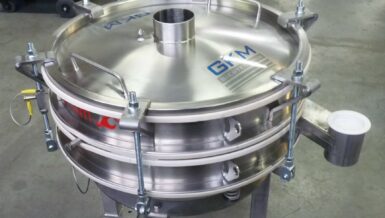Understanding these interactions and the underlying surface chemistry of powders is essential for controlling the properties and behaviors of powders during processing. Techniques used to study powder-to-powder interactions include microscopy and spectroscopy, which have given researchers a broader perspective and advanced our understanding of powder behaviors during processing. The complex world of surface chemistry shows us interesting particle interactions, including the various factors that influence powder behavior such as surface energy, surface roughness, and surface chemistry. A deeper understanding of powder-to-powder interactions and surface chemistry can greatly benefit industry standards, performance, and efficiency, leading to more sustainable industrial processes.
One of the key techniques used to study powder-to-powder interactions is microscopy. Researchers use research equipment such as scanning electron microscopy (SEM) and transmission electron microscopy (TEM) to investigate and analyze powders’ microstructure, providing insight into the physical interactions between particles. These techniques also allow researchers to examine the surface morphology of powders, which can provide important information about their surface chemistry. Researchers can also use X-ray diffraction (XRD) to study the crystalline structures of powders, which can provide insight into the types of chemical interactions between the particles. Another important technique is spectroscopy, which can be used to study powders’ vibrational, electronic, and magnetic properties, providing functional information about the chemical interactions between the particles.
Surface chemistry and interactions
Surface chemistry plays a critical role in powder behavior and as a result, has a big impact on overall powder processing. The surface energy, surface roughness, and surface chemistry of powders can all influence how powders interact with each other and with other materials.
Surface energy, for example, can affect the adhesion and cohesion of powders, while surface roughness can affect the flowability and compressibility of powders. The surface energy is related to the ability of the surface of the particles to attract or repel each other, while the surface roughness is related to the ability of the particles to flow and pack together. When surface energy is high the powders tend to stick together and form agglomerates, this can affect the flowability and the compressibility of powders.
On the other hand, surface roughness can affect the flowability by making it more difficult for the particles to slide past each other, this can cause powders to be less flowable and more cohesive possibly causing slippage. Surface chemistry can also affect the chemical interactions between powders, such as adsorption and absorption. Understanding these surface properties is essential for controlling the behavior of powders in industrial processes.
Researchers also use various other equipment to study surface chemistry, such as X-ray photoelectron spectroscopy (XPS) and Fourier-transform infrared spectroscopy (FTIR), to examine powder surfaces’ chemical composition and bonding. X-ray photoelectron spectroscopy (XPS) is a technique that allows us to identify the elements present on the surface of the powders and to study their chemical states. Fourier-transform infrared spectroscopy (FTIR) is a technique that allows us to identify the functional groups present on the surface of the powders and to study their chemical states. These techniques can provide a detailed understanding of the surface properties of powders, which can aid in the development of new methods for controlling powder behavior. Additionally, the knowledge of surface chemistry can aid in the development of new formulations, advanced materials, or functional coatings that can modulate the surface properties of powders to achieve specific behavior and can be used to improve their properties and performances.
Industry applications
As previously mentioned, the continued study of powder-to-powder interactions and surface chemistry has important implications for the industry as a whole. For example, in the pharmaceutical industry, an understanding of powder-to-powder interactions and surface chemistry can be used to improve drug flowability, compressibility, and dissolution rate, which can help enhance their bioavailability and efficacy. In the ceramic additive manufacturing and metallurgical industries, an understanding of powder-to-powder interactions and surface chemistry can be used to improve the sintering and consolidation of powders, which can help to enhance the mechanical and electrical properties of the final products and in the food and cosmetics industry, an understan- ding of powder to powder inter- actions and surface chemistry can be used to improve the stability and texture of products.
Further study and conclusion
The study of powder-to-powder interactions and surface chemistry is essential for understanding the behavior of powders in industrial processes.
Researchers product developers and testing laboratories have used a variety of techniques, such as microscopy, spectroscopy, and surface analysis, to study these phenomena, and this research has provided valuable insights into the physical and chemical interactions between powders. Understanding the surface properties of powders, such as surface energy, roughness, and chemistry, is crucial for controlling the behavior of powders in industrial processes.
The implication of this research can be seen in various industries such as pharmaceuticals, ceramics, metal-lurgy, food, and cosmetics.
However, despite the progress that has been made in this field, there is still much to be learned about powder-to-powder interactions and surface chemistry. Further research, development, and laboratory testing are needed to fully understand the complex interactions between powders and to develop new techniques for studying these phenomena and improving powder-to-powder interactions.










































